The Decommissioning of Davis Creek Dam
A Brief History
Construction of the Davis Creek Dam by the Civilian Conservation Corps (CCC) began in April of 1939. As designed, the dam was built as a 100-foot-long, 10-foot-high obstruction across Davis Creek. The purpose of construction was the resulting impoundment, which created a swimming hole on the Kanawha State Forest property. Construction of the dam was completed in the summer of 1940 and Davis Creek upstream was promoted as the first public natural swimming pool in the Greater Kanawha Valley. The upstream pool was eventually named Ellison Pond.
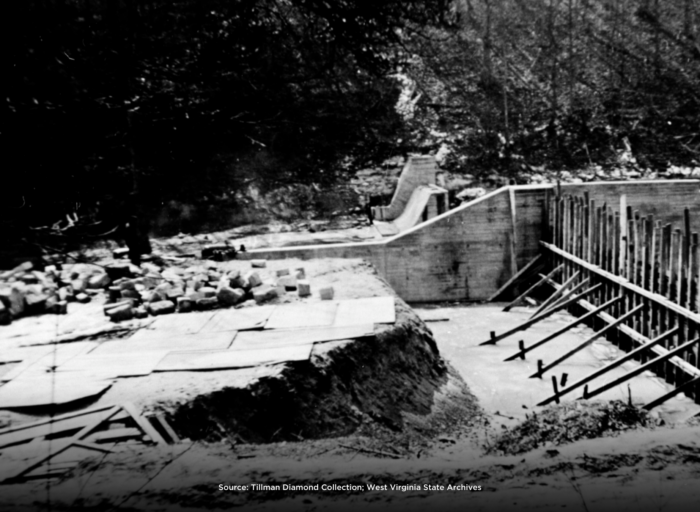
A Swimming Hole
The swimming pool was large enough to support ample recreational development. The additions of the bathhouse, storage facilities, and new diving platform, along with minor beach improvements, completed the pool project.
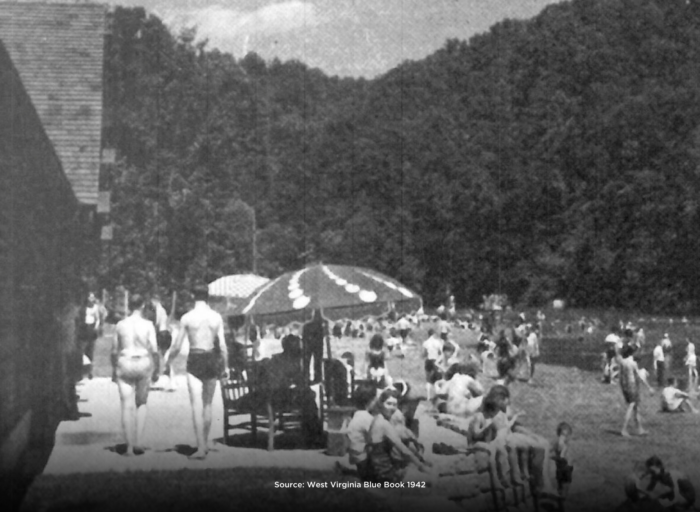
A Fishing Hole
Ellison Pond evolved to offer the Kanawha Valley local recreational fishing opportunities after swimming conditions were deemed unsafe. The pond was stocked with catfish, sunfish, and other native fish species and was specifically promoted as a recreational fishing pond for children. Charleston Gazette (February 17, 1950). In 2000, the pond was officially designated as a Class-Q fishery.
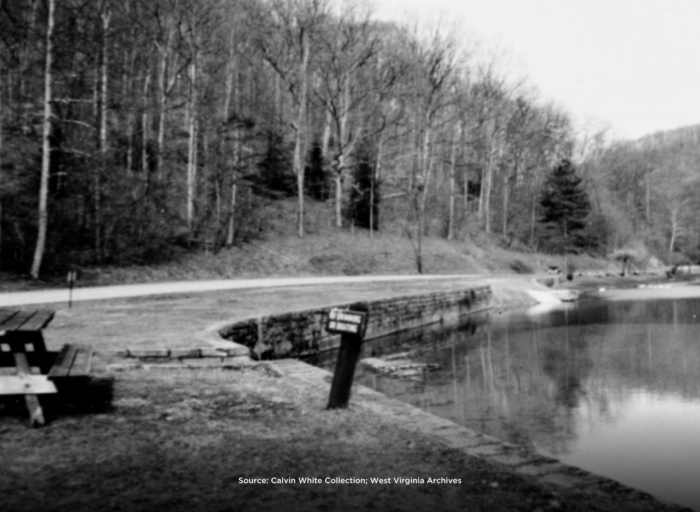
Decision to Decommission
Throughout the years, Ellison Pond accumulated large amounts of sediment carried downstream from Davis Creek, which required removal every six years to keep the pond habitable for aquatic life. However, due to the high cost associated with each removal, continued periodic dredging efforts became infeasible. As a solution to this problem, a stream restoration project was proposed to remove the Ellison Pond Impoundment.
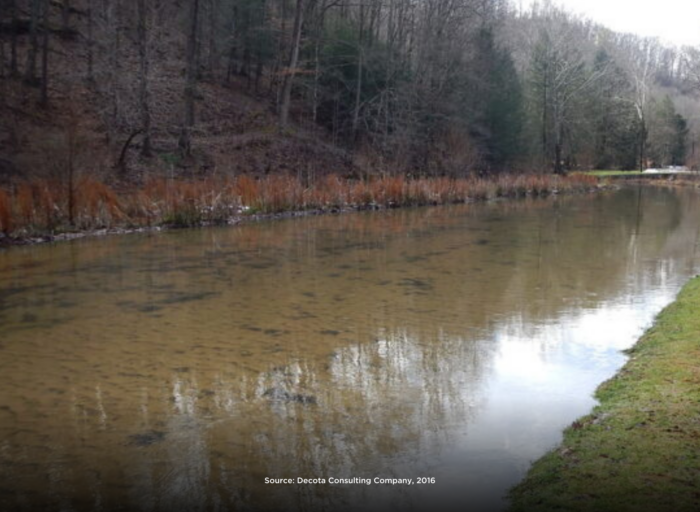
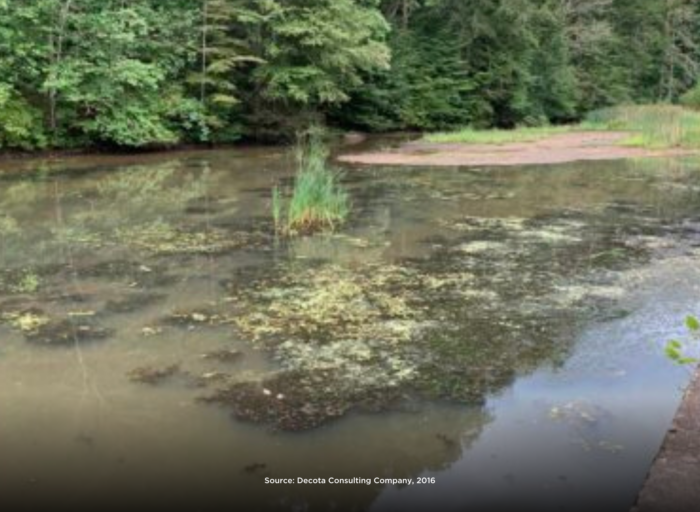
Project Development
The Davis Creek dam removal and stream restoration project was funded by the West Virginia Department of Environmental Protection’s In Lieu Fee (WVILF) Program. The purpose of the WVILF program is to achieve no net loss of existing stream and wetland functions in West Virginia through effective restoration, enhancement, replacement, and preservation of aquatic resources. In 2016, initial biological, water quality, and habitat assessments were used to establish a baseline condition for the project area and development of the concept plan began.
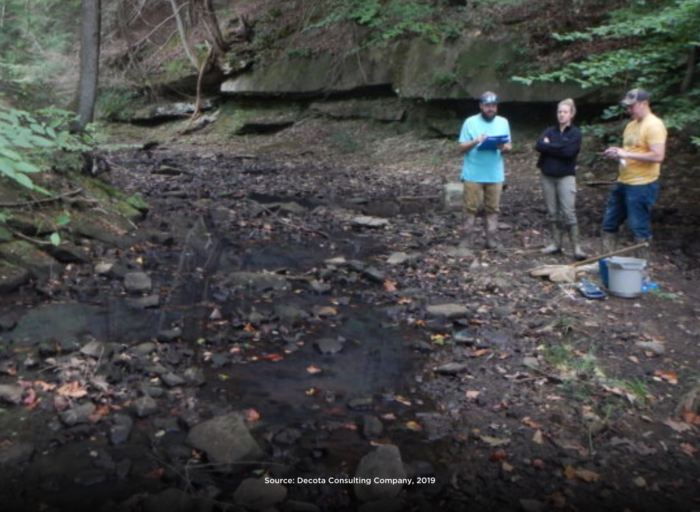
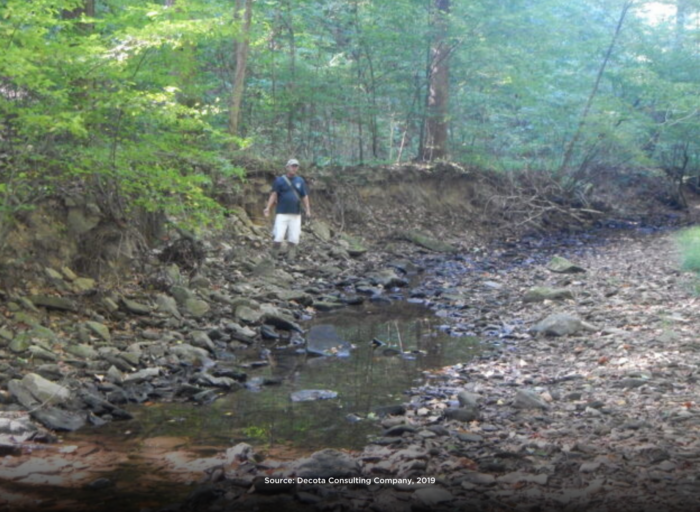
In 2018, detailed surveys of the existing stream and pond were performed, and the detailed project design began. In 2019, a project plan was submitted to the Interagency Review Team, a multi-agency review team led by the US Army Corps of Engineers.
The Project Begins
In 2021, the Kanawha State Forest WVILF Project was approved, and the permit was issued. Construction began in September 2021 to remove the dam and restore the Davis Creek stream channel through the former pond. The first item of work was to drain the pond and begin the removal of the dam.
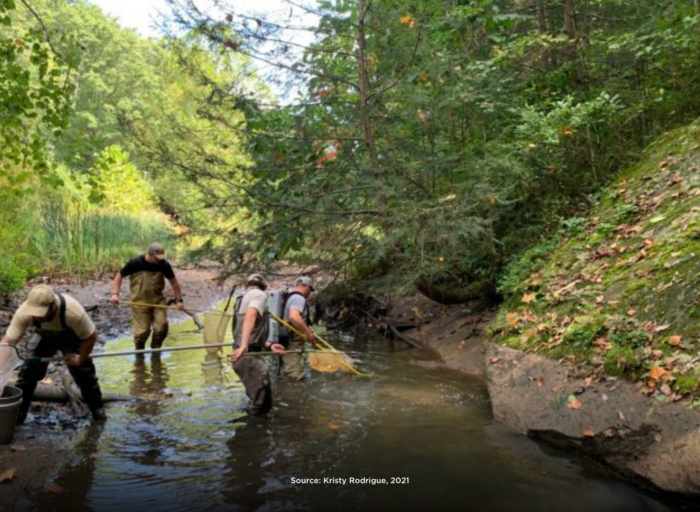
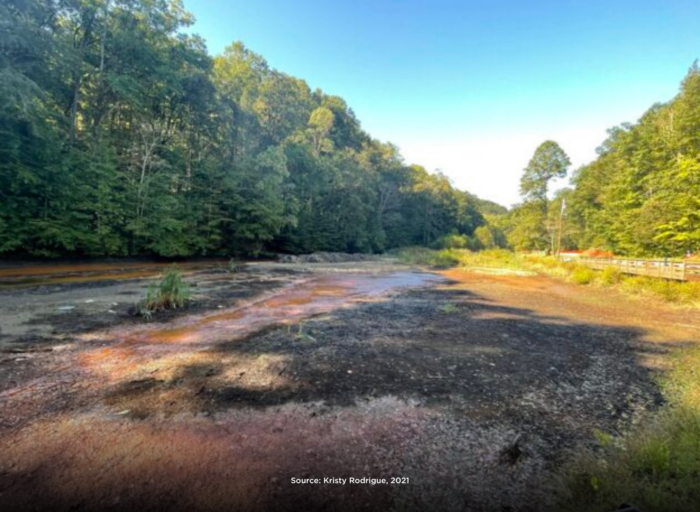
Deconstruction
Once the pond was drained, demolition of the dam and construction of the new stream channel began concurrently. The dam was ground down in small increments using an excavator with a grinding head attachment. Only a V-shaped notch was actually removed from the dam, the rest of it was left in place as a grade control structure. Although it is mostly covered with dirt, the top of the wall and side abutments are still visible.
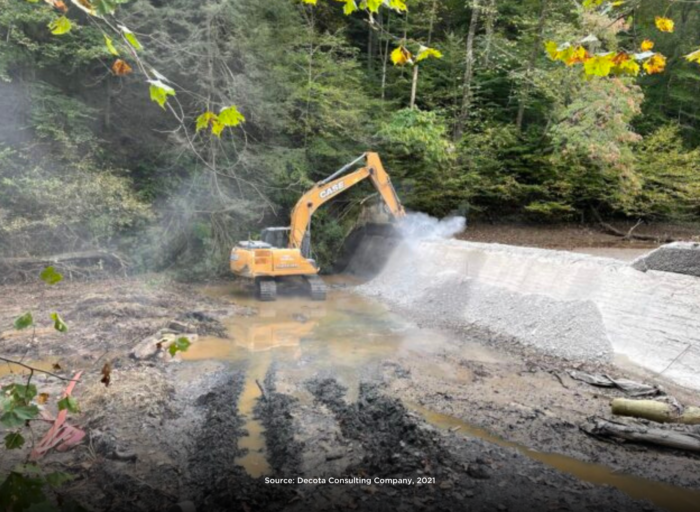
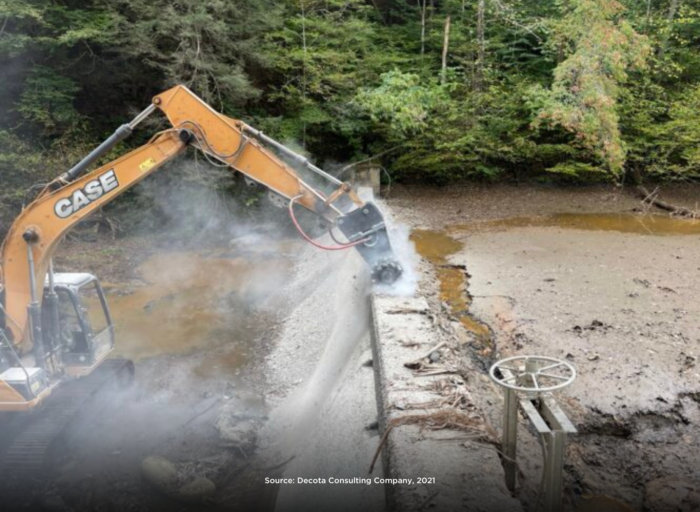
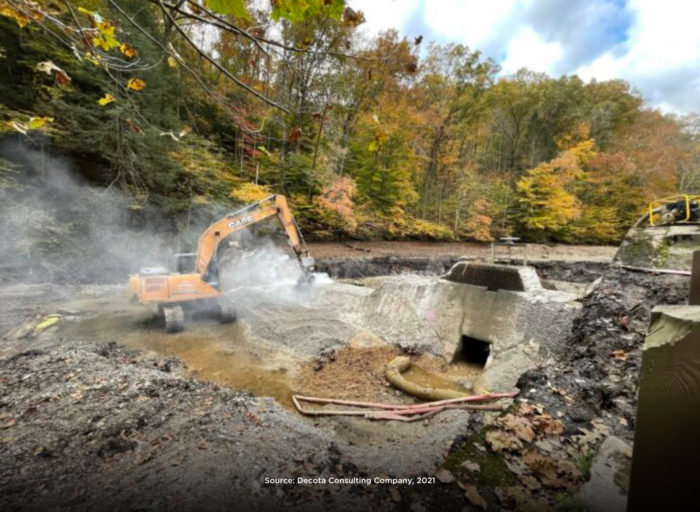
Restoration
Construction of the stream channel through the former pond was difficult due to the composition of the substrate material, which was a mixture of sand and decomposing organic muck. In many areas, the sludge had to be removed and replaced with solid sand and soil from upstream.
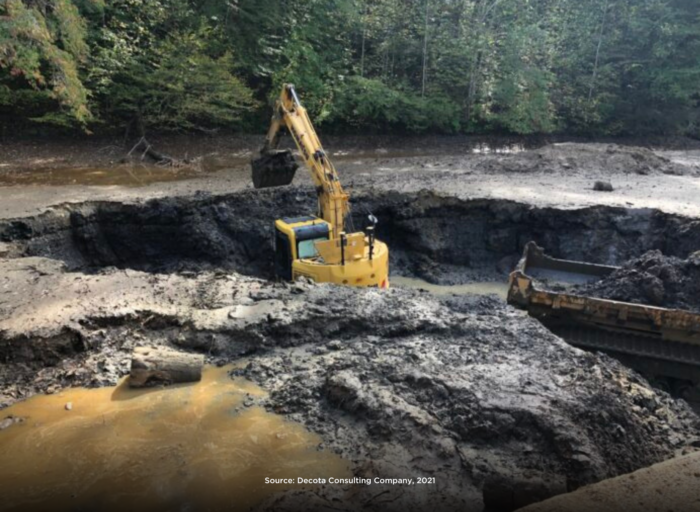
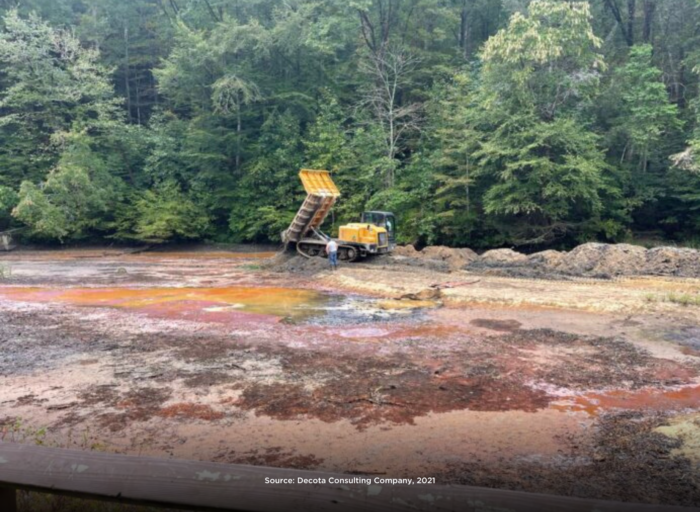
Once the rough stream channel was constructed, stability and habitat structures were added to stabilize the creek, provide shelter for fish, and enhance the reach to provide optimal fishing opportunities.
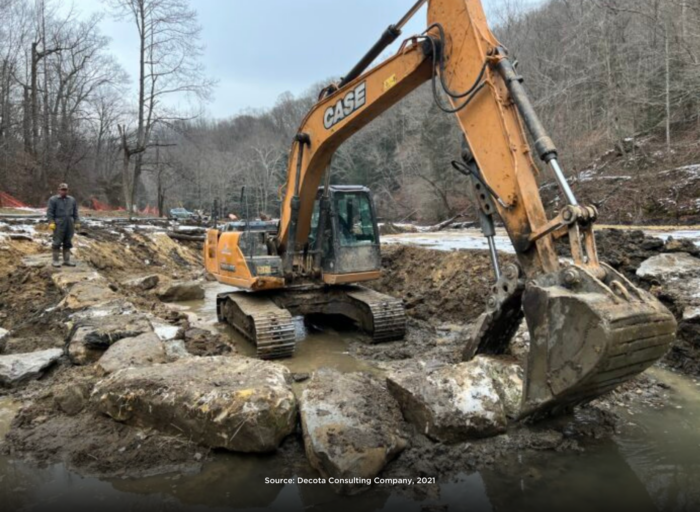
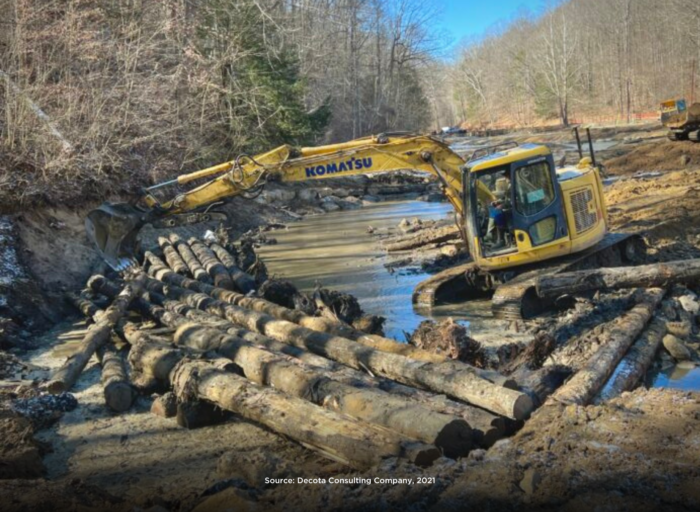
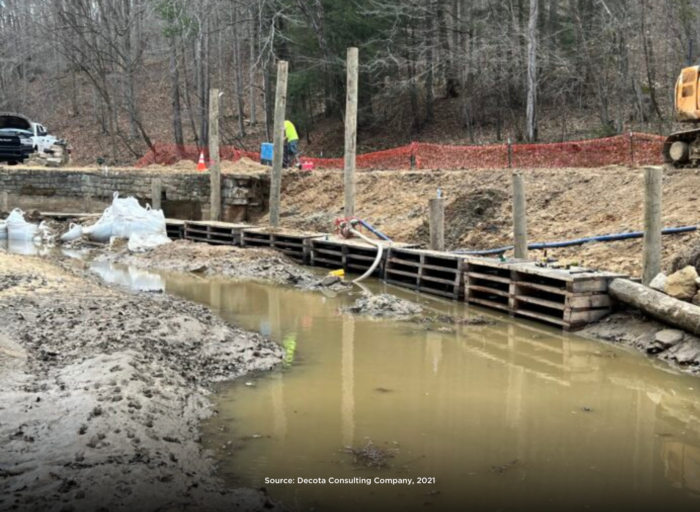
In addition to the construction of the stream in the former pond area, restoration work was performed on Davis Creek from the pond upstream to the bridge to the park office. This restoration consisted of stream realignments, bank erosion correction, digging deep pools, tree plantings, and constructing habitat and stability structures. This work reduced sediment input into the stream and created a fishable stream habitat for approximately 1 mile through the forest.
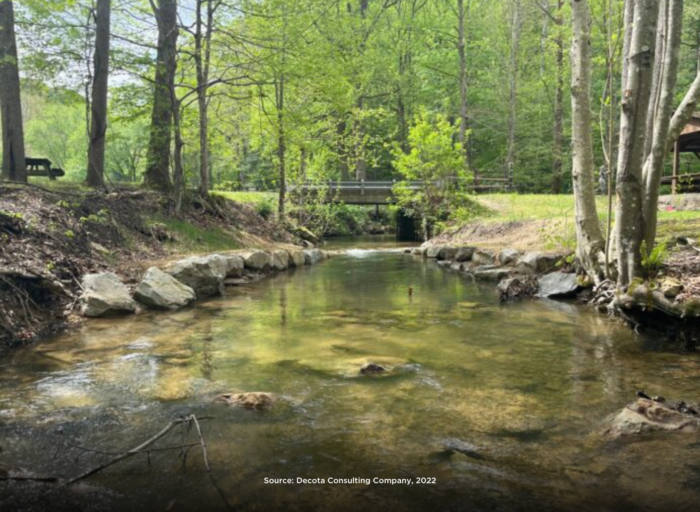
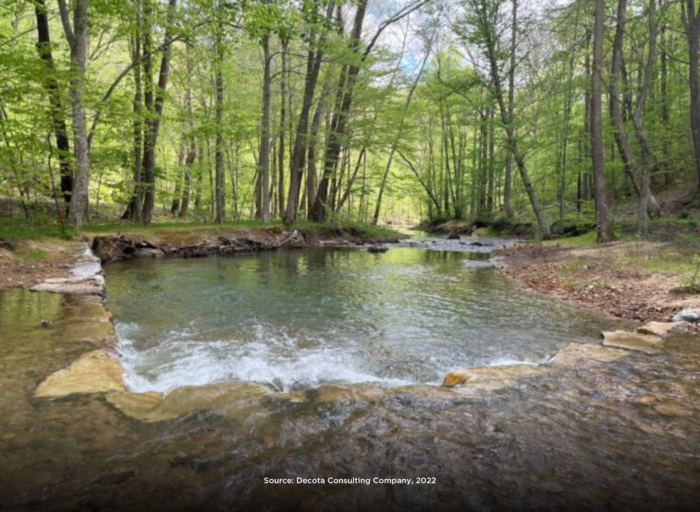
In 2022, the WV legislature designated all of Davis Creek within the park as a Class Q fishing area for children and individuals with disabilities. Once stream construction was completed, two new fishing piers were constructed in the former pond area to facilitate handicapped accessible fishing access. Underneath these piers are habitat structures called “lunker bunkers” specifically designed to attract and hold fish.
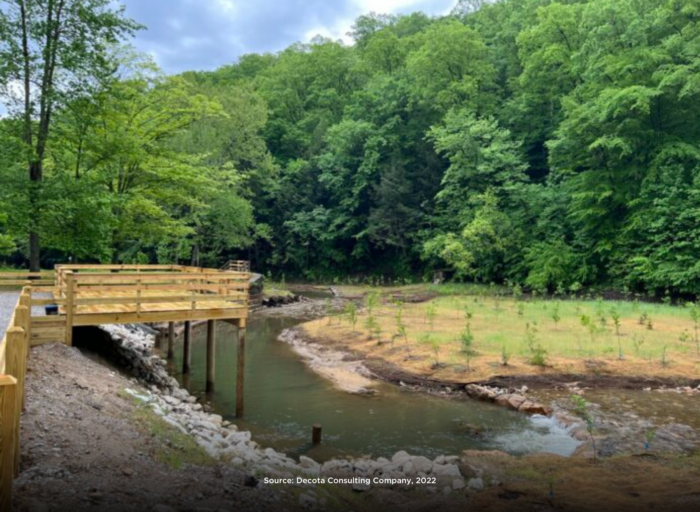
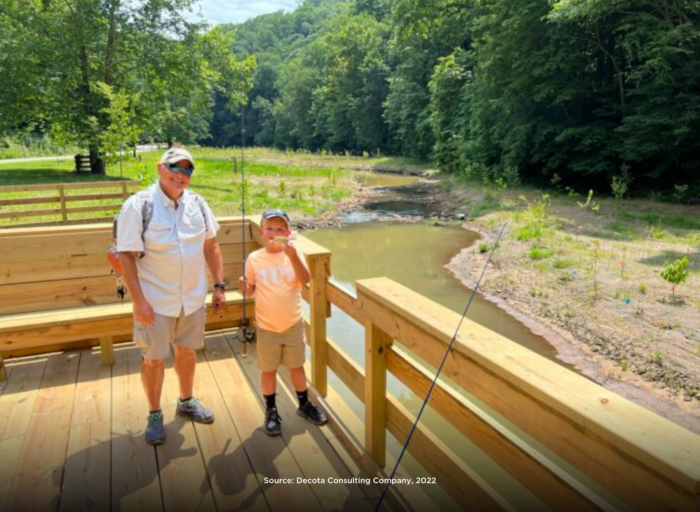
Post-Construction
The project monitoring period will last from 5 to 10 years post-construction. WVDEP will monitor the stream each year to assess its stability, water quality, habitat quality, and ecological communities to make sure the project is hitting its functional goals. In addition to the stream itself, the surrounding riparian zone is monitored to ensure the planted trees are successful and that invasive species are kept under control.
